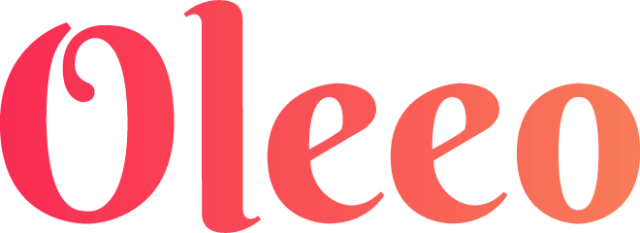Top Takeaways from the NHS Recruitment and Inclusion Framework

The National Health Service has recently released a collection of case studies focused on how to improve inclusive recruitment efforts. The report, titled ” Inclusive Recruitment: Leading Positive Change,” studied private, public, and government organizations of all sizes to see how different companies successfully increased diversity in their recruitment.
The collected case studies demonstrate how organizations of all kinds can make positive changes and recruit a broader range of candidates by making a few simple changes. Below, you’ll find the top takeaways from the NHS recruitment report, as well as examples of how other organizations have met their goals.
Job Creation
First, the NHS recruitment report focused on job creation. Many organizations struggle to increase diversity and inclusion due to slow turnover. In these industries, creating new positions and focusing on removing barriers to entering the workforce can be one of the best ways to recruit a more diverse staff.
One of the most interesting case studies focused on job creation covered Barts Health NHS Trust, a trust connected to a major hospital operator in London. The Trust wanted to make the medical world more inclusive of people with learning disabilities, so in 2013 it chose to develop an internship program specifically dedicated to these individuals.
The internship program has so far been a significant success. Within five years, the program grew from six interns to 24; as of 2021, 85 interns have completed the program. A third of these now work with Barts Health or its contractors. By creating new roles and specifically selecting marginalized people, Barts Health was so successful in diversifying its workforce that it won “Best Diversity and Inclusion Practice” at the 2019 Nursing Times Workforce Summit.
Person Specifications and Job Descriptions
A common barrier to inclusive recruitment is found in demographic specifications and job descriptions. Many job descriptions include language that pushes marginalized people away from applying. This can consist of unnecessary role specifications or language expressing unconscious biases. Rewriting job descriptions without hidden prejudice can significantly improve the Diversity Recruiting process.
For example, the NHS recruitment report highlighted changes made by software company Atlassian. The company determined that its recruitment processes were being hindered by biases within its job descriptions. The company used AI software to identify language within its job descriptions that tended to lead toward less diverse hiring. It then rewrote job postings to remove these biases and include language appealing to a broader range of candidates.
Atlassian’s new processes were a dramatic success. After altering its person specifications and job descriptions, the company went from hiring women for 10% of all positions to 57%. A simple but crucial change in language helped Atlassian become a significantly more inclusive employer.
Job Adverts
The language of a job description is only part of recruiting diverse new candidates. Advertising job openings is just as crucial for winning applications. However, job advertisements are just as prone to subtle biases, potentially pushing away qualified candidates from diverse backgrounds.
The solutions found in the NHS recruitment report were similar. Both the Lincolnshire Partnership NHS Foundation Trust and National Rail chose to review their current advertisements and update them with more inclusive language. They released new ads that focused on their commitment to values like diversity and inclusion and placed these ads where a broader audience would be able to see them.
In both cases, the changes worked. The Lincolnshire Partnership’s board is 42% female and 25% Black and minority ethnic (BME), compared to its previous composition primarily of white men. Similarly, National Rail’s staff is steadily becoming more diverse, with the proportion of women on staff rising by more than 18% and BME staff doubling.
Interviews
Once diverse candidates have applied for a role, it’s up to your organization to be inclusive in your hiring decisions. That means improving your interview process to avoid shared biases that impact hiring decisions and assessing candidates on their merits. Better interview processes also help improve retention by ensuring that you choose the person who’s genuinely best for the role instead of someone who fits organizational biases.
North Middlesex University NHS Trust wanted to achieve both of these goals, so it chose to make its interview panels purposefully diverse. The idea behind the change was that having women and BME staff interview candidates would reduce shared biases on the panels and lead to more accurate assessments of applicants’ skills.
The Trust found that the change was highly successful. Today, the board is 31% female and 38% BME. Making the interviewing panels more diverse naturally led to fewer shared biases and a stronger ability to pick candidates who were well suited for their roles.
Onboarding
Diverse recruitment is only successful if new hires choose to remain with your organization. Businesses with high levels of turnover, particularly among new recruits, often discover that their onboarding processes are not adequately supportive. Improving your onboarding processes can help you retain your staff and reduce the costs of constant recruiting.
For example, Yeovil Hospital struggled to retain nurses. In 2017, they had 82 vacancies that cost them millions of dollars yearly since they had to hire temp workers to care for patients. To resolve the issue, the hospital created a new recruitment team dedicated to filling nursing vacancies by focusing on the well-being of their nurses. The team adjusted the onboarding process to provide recruits with consistent access and support from mentors, assistance with relocating for the job, and proactive support from diverse workers.
Yeovil Hospital saw significant improvements in just 18 months after updating the onboarding policies. It reduced its staff turnover rate from 23% to 15%, reduced temporary staff costs by 86%, and cut sick leave absences in half, all by better supporting its new staff.
Talent Management
Developing a diverse workforce also means looking within your own organization. Once you have begun diversifying your external hiring process, you can take the next step by providing clear paths for promotion within your organization for all your staff. This talent management strategy helps to strengthen your organization and gives more opportunities to the marginalized people you have already hired.
The North East London NHS Foundation Trust wanted to ensure its succession planning process was robust and inclusive. The goal was to ensure that the Trust always had individuals ready to move into higher positions should they become vacant, as well as to guarantee that every level of the organization was diverse and representative of its community. To accomplish this, the Trust focused on providing training and development opportunities to multiple diverse people one and two levels down for every executive board role.
As a result, the Trust has significantly increased diversity throughout its staff. The Trust’s board is 40% female and 53% BME, which is also representative of the rest of the Trust’s workforce. The organization’s culture allows staff to trust that they and their community are represented at every level..
Leadership and Culture
Addressing leadership and culture within your business is fundamental to becoming a more inclusive employer. Your leadership’s culture and shared bias will shape your interviews, onboarding, and talent management, whether you want it to or not. Building a culture of acceptance and inclusion throughout your organization can significantly improve the success of your recruitment practices.
For instance, consumer goods giant Unilever made it a target to achieve gender parity across all levels of management by improving the company culture. The company performed in-depth analyses of all of its functions and regions to identify weaknesses, then implemented changes, such as:
- Requiring gender-balanced interview panels
- Tracking KPIs such as gender appointment ratios
- Implementing new work-life balance offerings
- Providing women with mentoring programs
- Improving safety and accommodations across the company
As a result, the company’s gender balance improved significantly. The number of women in executive roles more than doubled from 15% to 33%, while overall, women hold 50% of all management-level positions globally within the company. Unilever took the initiative to change its organizational culture by providing better support to women. In return, it has become one of the most inclusive employers in the world.
Prioritizing Inclusion Makes a Difference
There’s a common theme throughout the NHS recruitment report’s case studies: inclusion must be an active recruitment priority, or you cannot achieve true inclusivity. The organizations that saw the most significant improvements invested in change.
They altered their hiring processes to prevent bias, provided more resources to new staff, or even overhauled their company culture to make it more accepting. These holistic changes allowed NHS recruitment to connect with and support a broader range of qualified candidates, allowing the organizations to fill vacancies and better represent their communities.
You can take the first step to improve your recruiting processes by working with NHS recruiting specialists focused on inclusion. Oleeo offers end-to-end talent acquisition software specifically built to ease NHS Recruitment Challenges. With Oleeo NHS recruiting, you can improve candidate experiences, save recruiter time, and make diversity a top priority. Learn more about how Oleeo’s NHS Recruitment Software can help you improve your hiring process or request your demo today.



